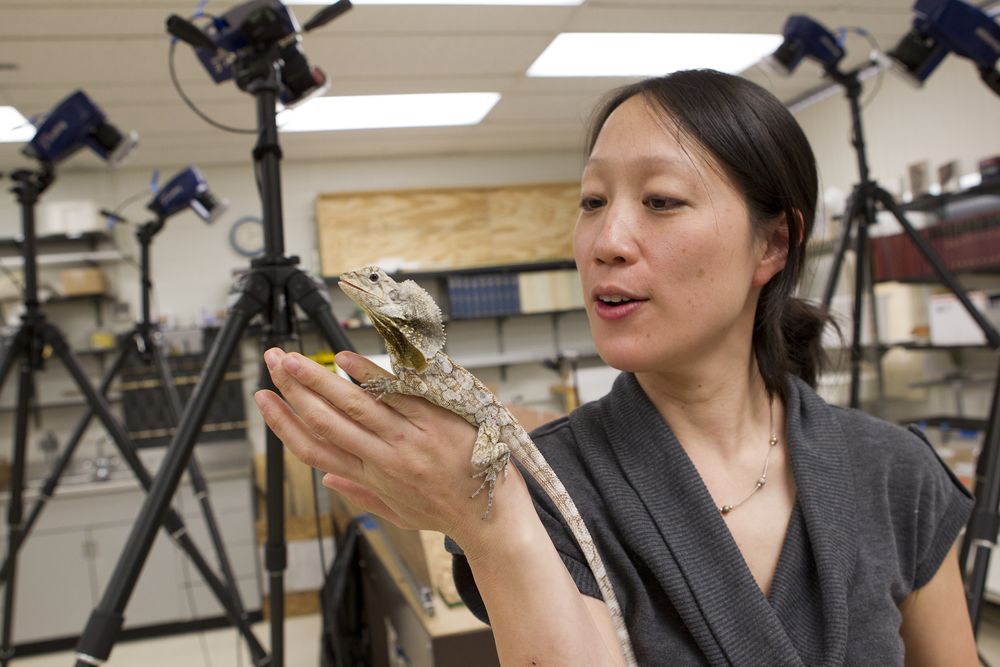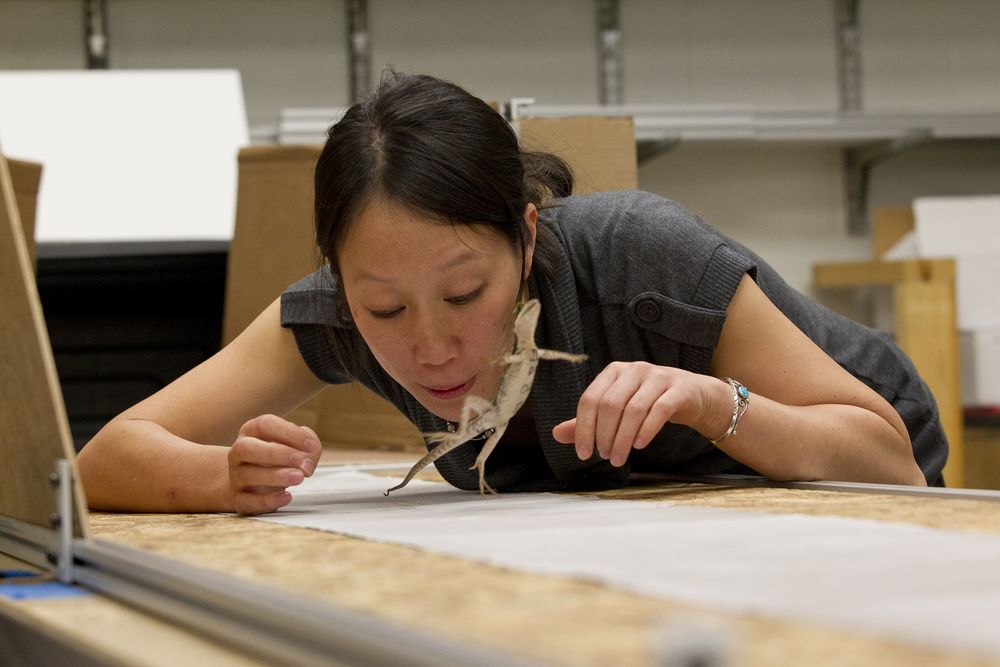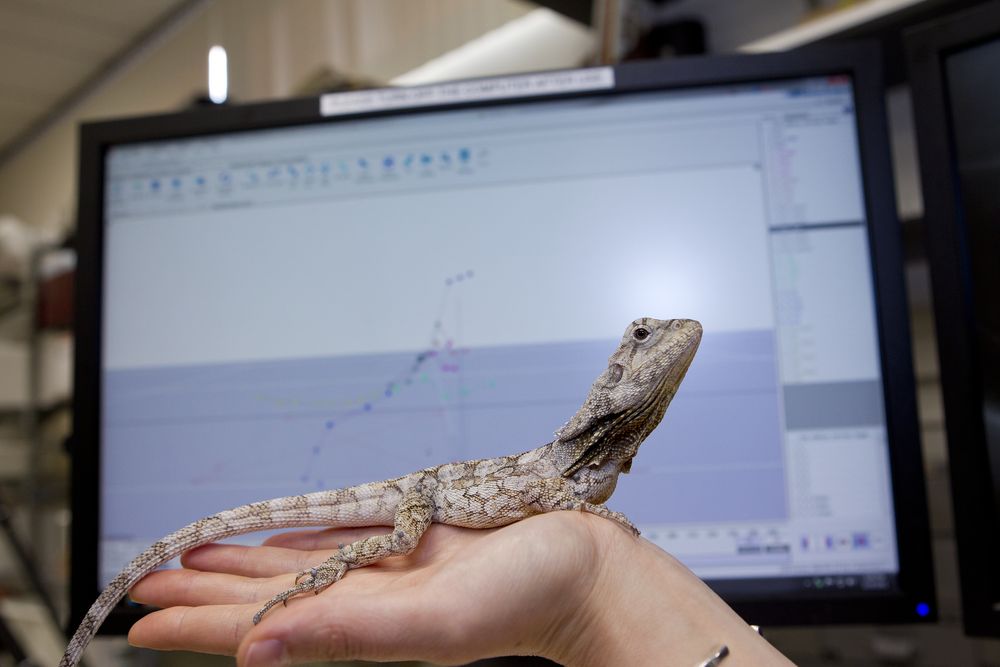Lizard locomotion study could aid elderly, robotics
Every day we traverse a wide variety of surfaces — hard, smooth, soft, rough; everything from concrete to stone to wood, metal, tile, carpet, dirt and grass.
What helps us to instinctively adapt while walking in changing environmental conditions as we move across these varying surfaces? That’s the question that Tonia Hsieh, assistant professor of biology in Temple’s College of Science and Technology, has been trying to answer in her lab. The results could have future implications for the elderly, robotics and a better overall understanding of locomotor control.
“Just to get to this lab you probably had to walk over some sidewalks, possibly some grass, the tile in the hallway and even transition onto carpet,” she said. “Theoretically, all these different surfaces should be very difficult to traverse smoothly. You would probably trip upon hitting the carpet if we didn’t have built-in control mechanisms.”
But what are these built-in control mechanisms and how do they work? Hsieh believes the answers lie in the locomotion of some 130 lizards she has been studying in her lab, particularly basilisk lizards — nicknamed “Jesus lizards” because they can run across water — and baby frilled dragons from Australia.
“On the most basic level the answer is balance,” said Hsieh. “If these animals can’t maintain their balance, they cannot escape from predators, find food or even mate and reproduce.”
Hsieh wants to understand how these lizards maintain that balance and quickly recover from slip perturbations while navigating changing environmental conditions such as narrow surfaces, smooth surfaces, slippery surfaces, granular surfaces and even surfaces that vary in height.
Using high-speed infrared cameras, which capture 500 frames-per-second compared to the 30 frames-per-second of a standard video camera, Hsieh videotapes the animals, which are tagged with reflective markers, as they run on their hind legs down an eight-foot track.
“The reason we specifically chose these species is because they readily rise up from running on four legs to sprint on just two legs,” she said.
As the lizards run down the hard, smooth surface, they encounter an area covered by glossy poster board covered with a slippery film.
“We obscure this slippery surface so they don’t see it and slip unexpectedly,” explained Hsieh. “We examine the differences between a successful recovery versus one in which they fall, specifically to understand what they are doing differently in each scenario.”
Hsieh said unlocking these instinctive control mechanisms could have applications in assisting the baby boomer generation, which is reaching an age where slipping, falling and breaking a hip or leg could have dire consequences.
“There are a lot of hypotheses on why the elderly fall more,” she said. “Some say that as you get older, your reflexes slow or the springy tendons in your body become less springy. We can’t get at this age question directly, but instead use these lizards to elucidate the mechanisms that help a younger animal recover quickly when it begins to fall. We can then apply that knowledge towards improving therapy options or modifying environmental design for the elderly.”
Hsieh’s research could also impact the development of advanced robotics.
“We already have plenty of robots that have wheels, which perform excellently on flat, smooth surfaces. If we want to be able to get through more complex terrain, we need to build legged robots,” she said. “The current problem with that is a legged robot can slip, it can trip, and it can fall.
“It’s important to realize that animals do not have a specific program to tell them how to react to each and every possible perturbation scenario in the real world,” said Hsieh. “As a result, their control mechanisms must be all-encompassing, yet likely very simple to speed reaction times. By understanding how animals recover from slips, we can devise better control algorithms to make stable and adaptable legged robots a reality.”


